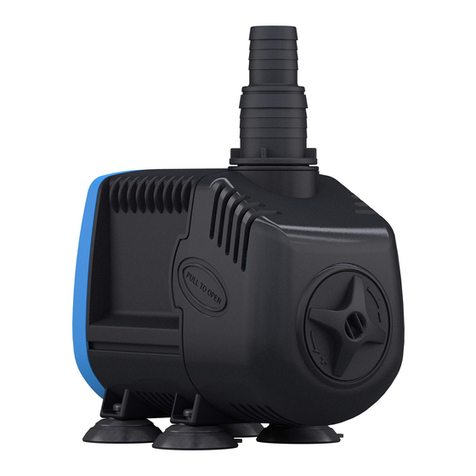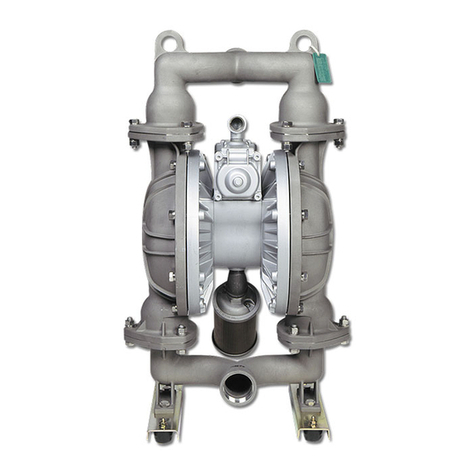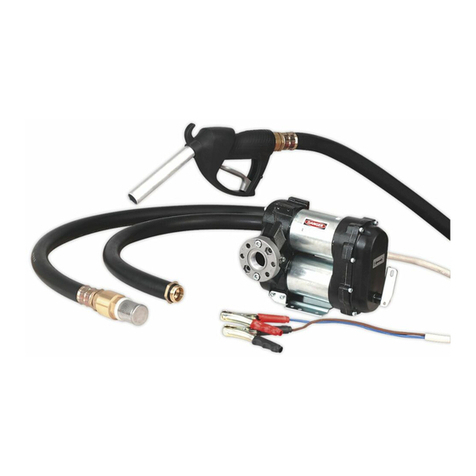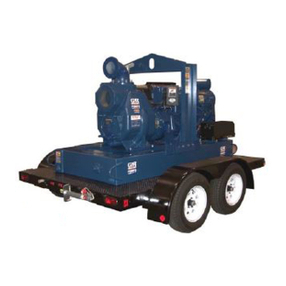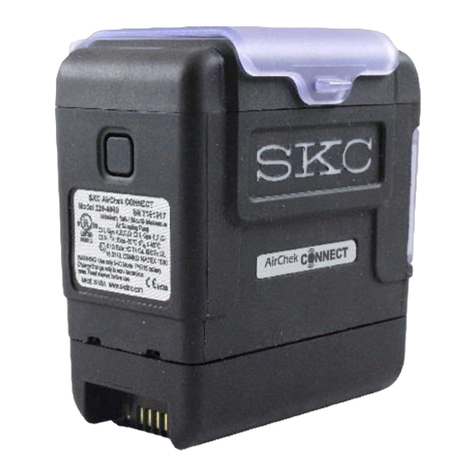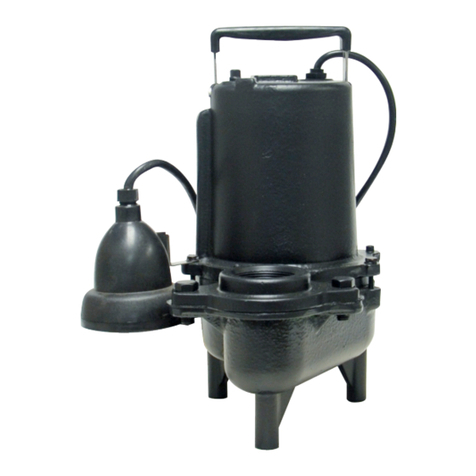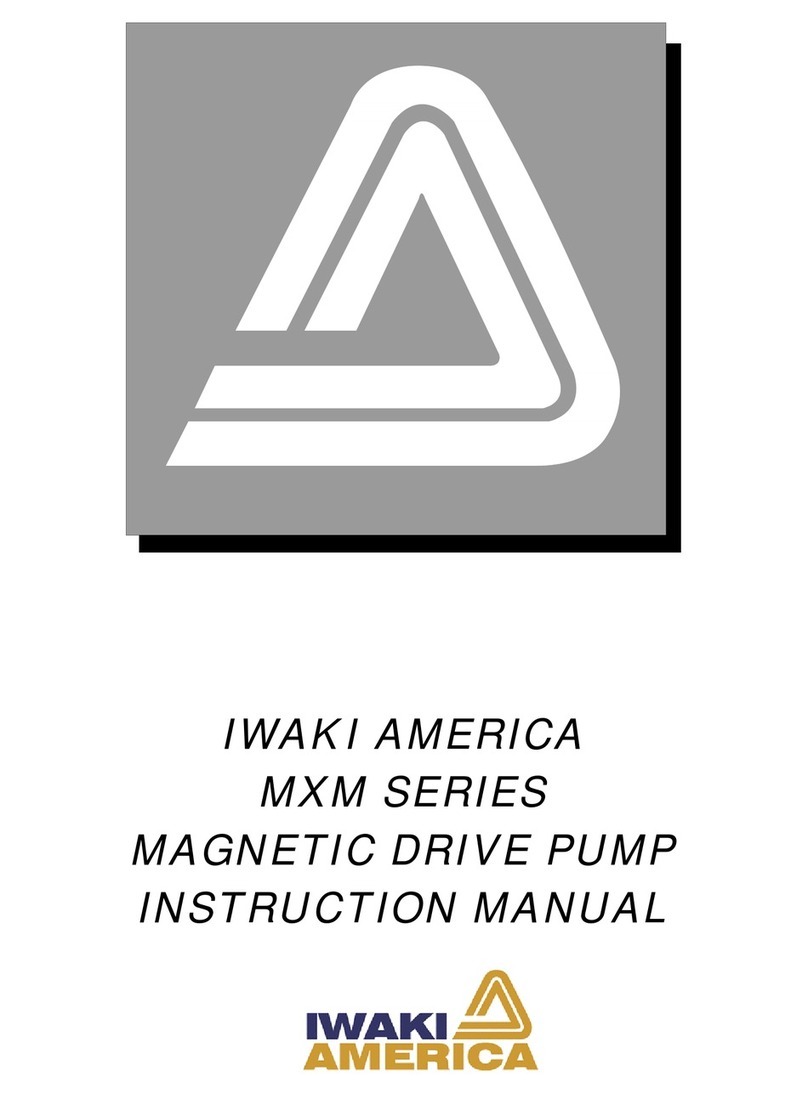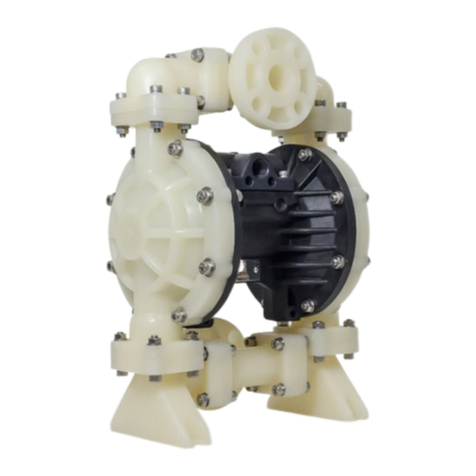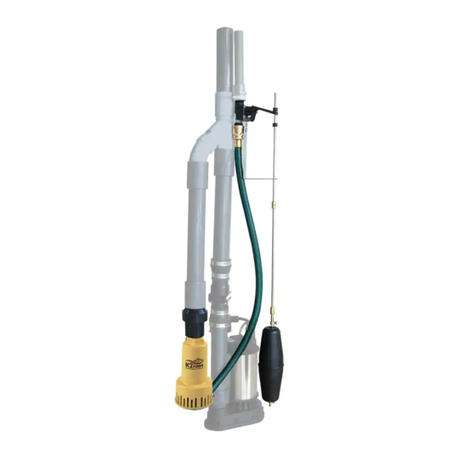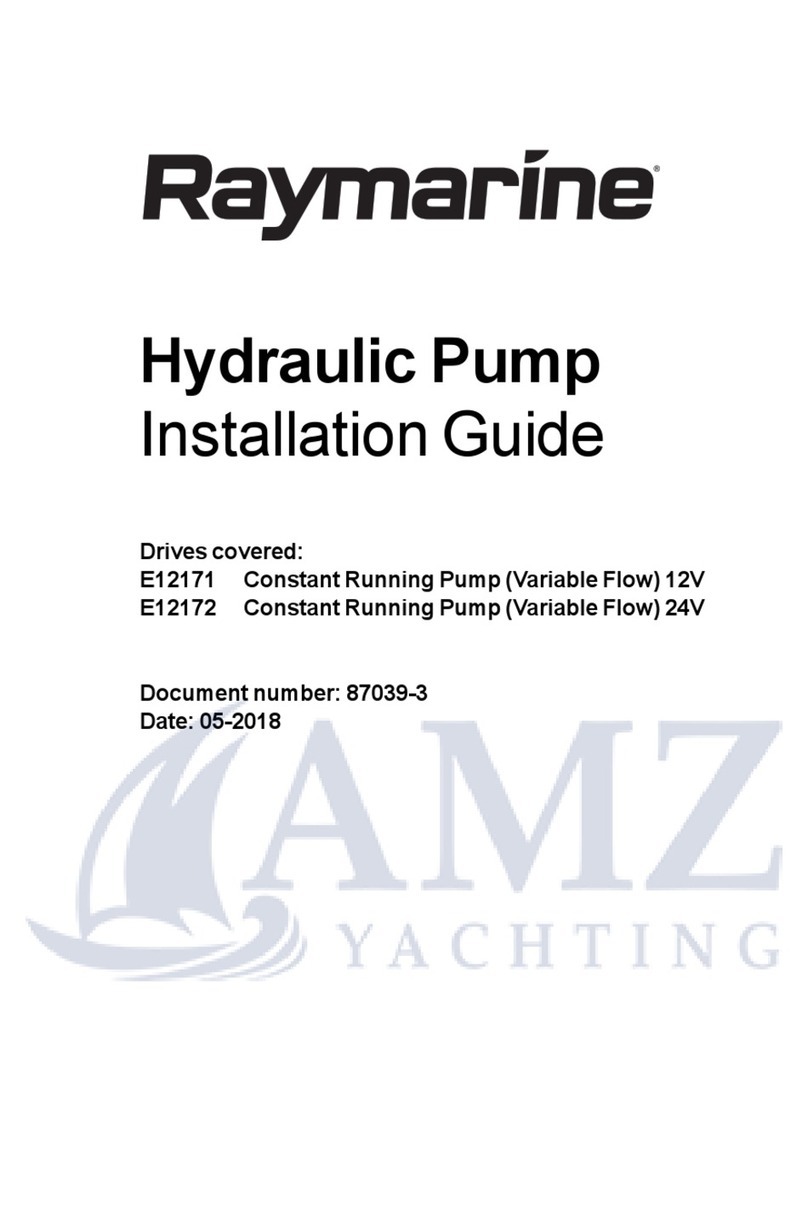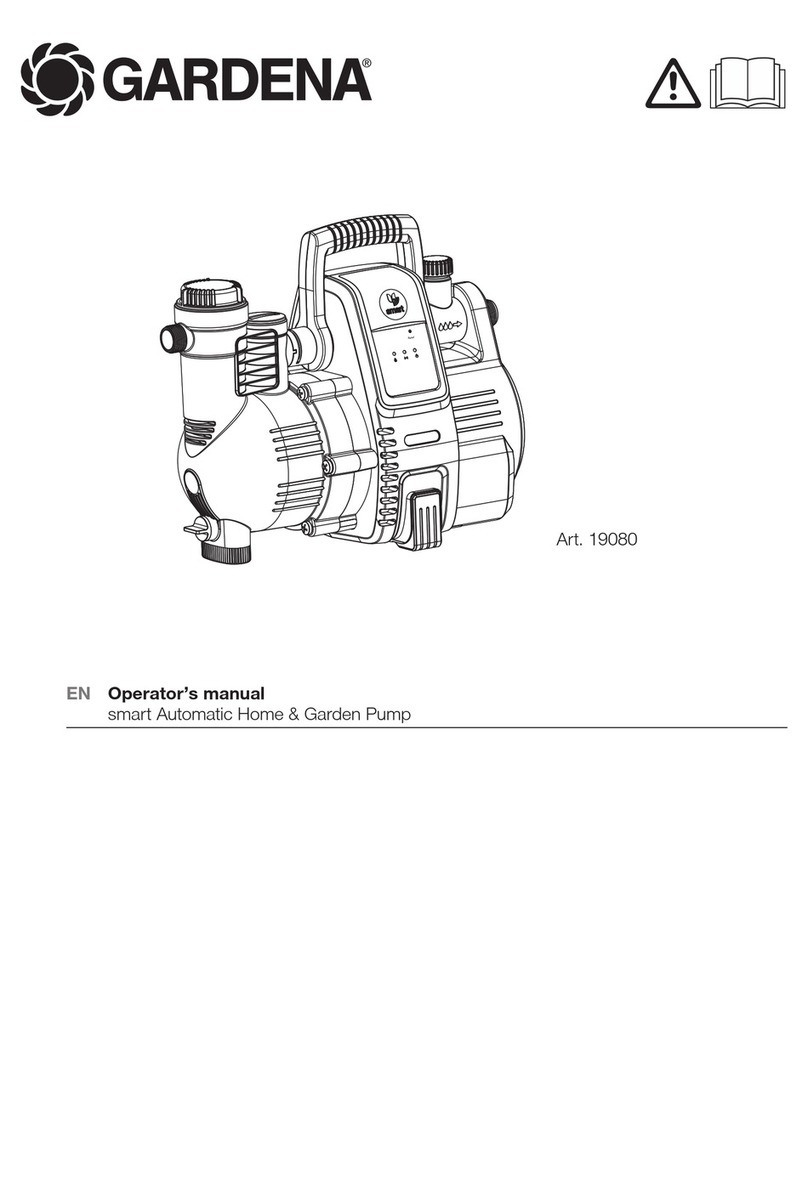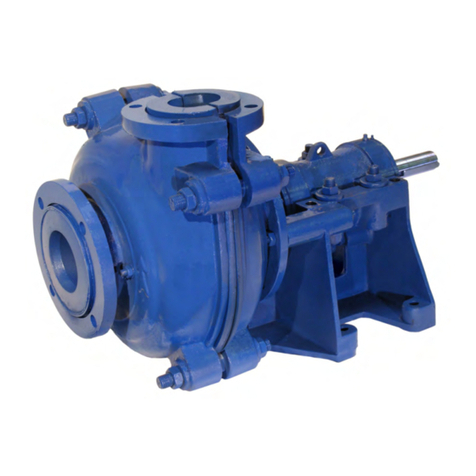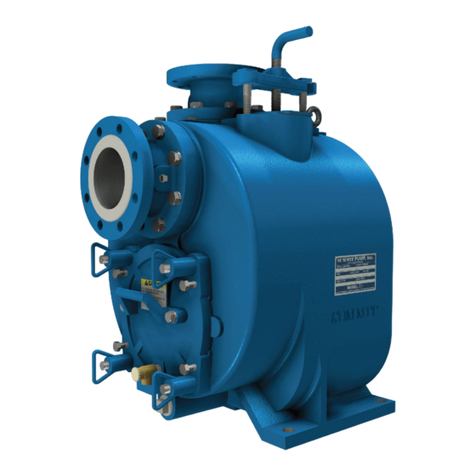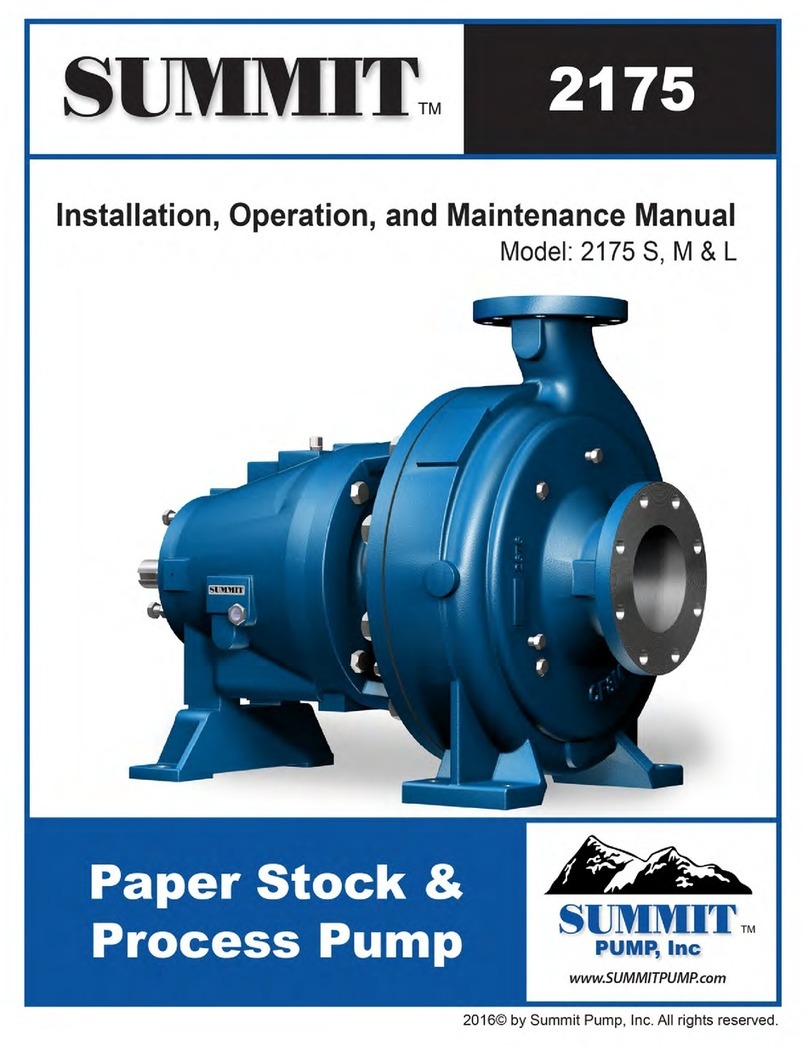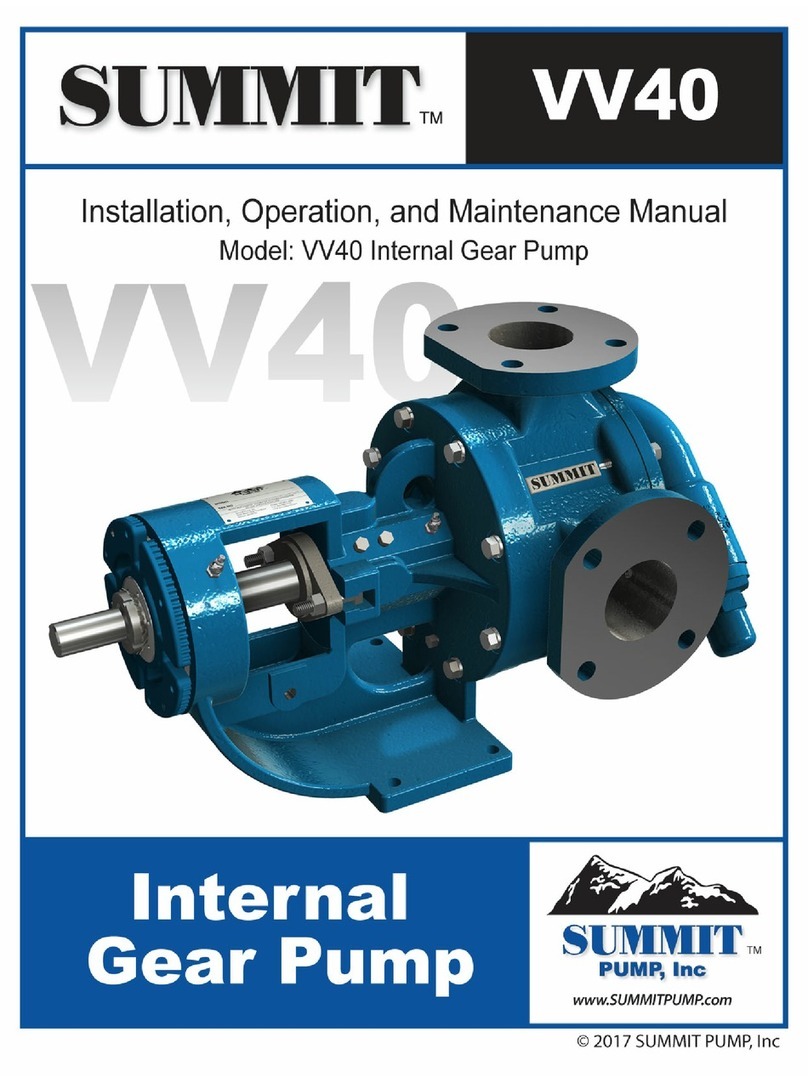
Installation, Operation, and Maintenance Manual
SUMMIT PUMP MODEL DSR 10
APPENDIX A – PUMP TROUBLE SHOOTING
CHECKLIST FOR OPERATING DIFFICULTIES
TEN SYMPTOMS POSIBLE CAUSES
1. Pump does not delivery water: 1-2, 3-4, 6-11-14-16-17-22-23
2. Insufficient capacity delivered: 2- 3-4-5-6-7-8-9-11-14-17-20-22-23-29-30-31
3. Insufficient pressure developed: 5-14-16-17-20-22-29-30-31
4. Pump loses prime after starting: 2-3-5-6-7-8-11, 12-13
5. Pump requires excessive power: 15-16-17-18-19-20-23-24-26-27-29-33-34-37
6. Stuffing box leaks excessively: 13-24-26-32-33-24-35-36-38-39-40
7. Packing has short life: 12-13-24-26-28-32-33-34-35-36-37-38-39-40
8. Pump vibrates or is noisy: 2-3-4-9-10-11-21-23-24-25-26-27-28-30-35-36
41-42-43-44-45-46-47
9. Bearings have short life: 24-26-27-28-35-36-41-42-43-44-45-46-47
10. Pump overheats and seizes: 1-4-21-22-24-27-28-35-36-41
FORTY-SEVEN POSSIBLE CAUSES OF TROUBLE
Suction Troubles
1. Pump not primed. 28. Bearings worn.
2. Pump or suction pipe not completely filled 29. Wearing rings worn.
with liquid. 30. Impeller damaged.
3. Suction lift too high. 31. Casing gasket defective, permitting
4. Insufficient margin between suction internal leakage.
pressure and vapor pressure. 32. Shaft or shaft sleeves worn or
5. Excessive amount of air or gas in liquid. scored at the packing.
6. Air pocket in suction line. 33. Packing improperly installed.
7. Air leaks into suction line. 34. Incorrect type of packing for
8. Air leaks into pump through stuffing boxes. operating conditions.
9. Foot valve too small. 35. Shaft running off center because
10. Foot valve partially clogged. of worn bearings or misalignment.
11. Inlet of suction pipe insufficiently submerged. 36. Rotor out of balance resulting in
12. Water-seal pipe plugged. vibration.
13. Seal cage improperly located in stuffing box, 37. Gland too tight resulting in no flow
preventing sealing fluid entering space to of liquid to lubricate packing.
form the seal. 38. Failure to provide cooling liquid to
water-cooled stuffing boxes.
System Troubles 39. Excessive clearance at bottom of stuff-
14. Speed too low ing box between shaft and casing,
15. Speed too high causing packing to be forced into
16. Wrong direction of rotation. pump interior.
17. Total head of system higher than design 40. Dirt or grit in scaling liquid, leading to
head of pump. scoring of shaft or shaft sleeve.
18. Total head of system lower than pump 41. Excessive thrust caused by a mechani-
design head. cal failure inside the pump or by the
19. Specific gravity of liquid different from design. failure of the hydraulic balancing
20. Viscosity of liquid differs from that for 42. Excessive grease or oil in antifriction-
which designed. bearing housing or lack of cooling,
21. Operation at very low capacity. causing excessive bearing temperature.
22. Parallel operation of pumps unsuitable for 43. Lack of lubrication.
operations. 44. Improper installation of antifriction
bearings (damage during assembly,
Mechanical Troubles incorrect assembly of stacked brg.,
23. Foreign matter in Impeller. use of unmatched brgs. as a pair, etc.)
24. Misalignment. 45. Dirt getting into bearing.
25. Foundations not rigid. 46. Rusting of bearings due to water
26. Shaft bent. getting into housing.
27. Rotating part rubbing on stationary part. 47. Excessive cooling of water-cooled
brg. Resulting in condensation.




















